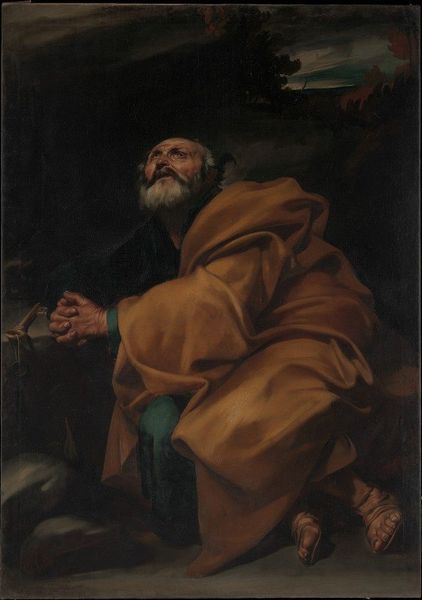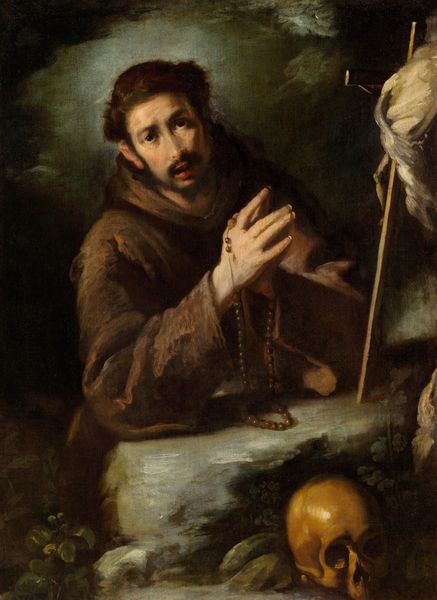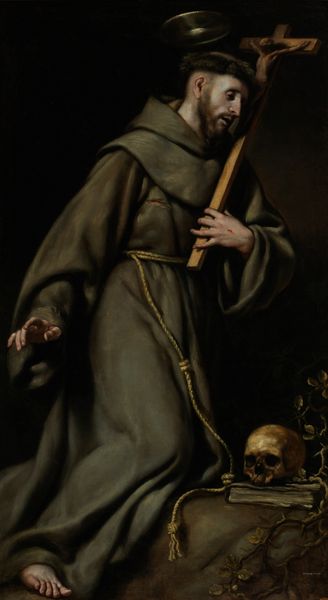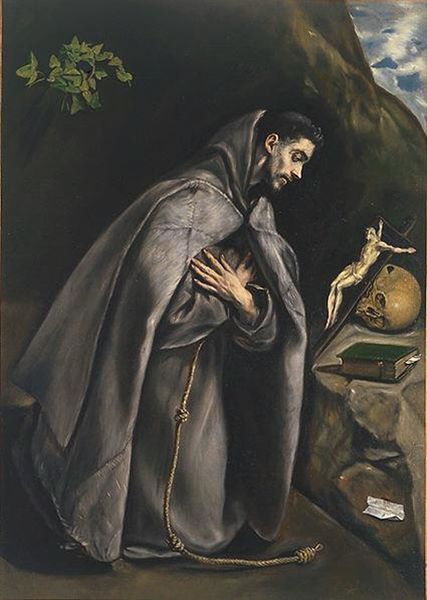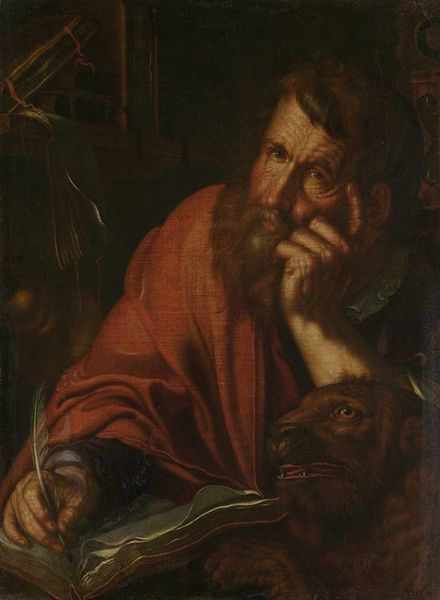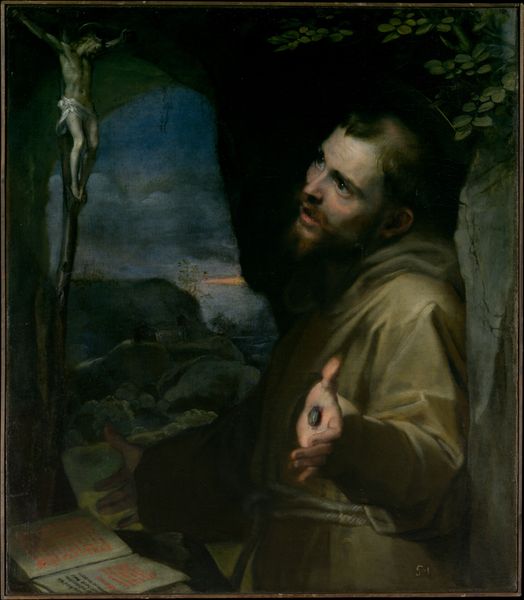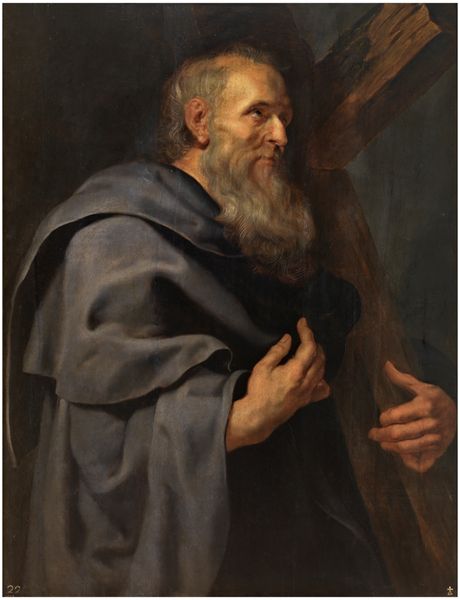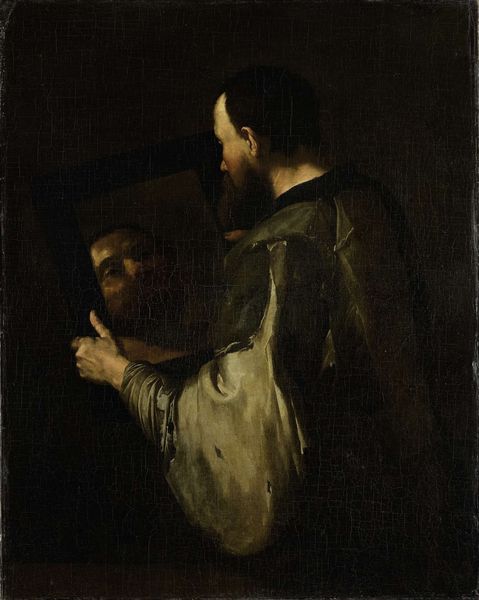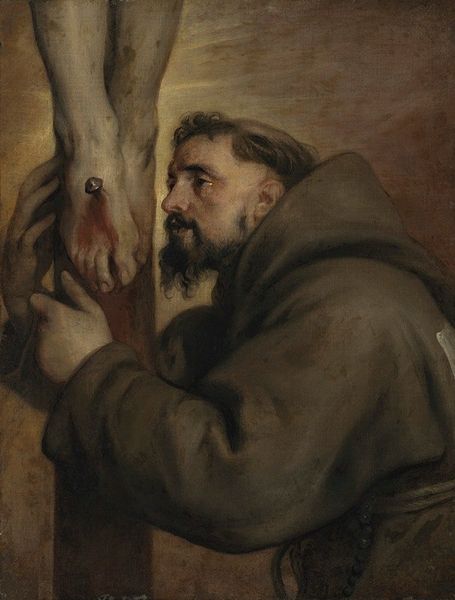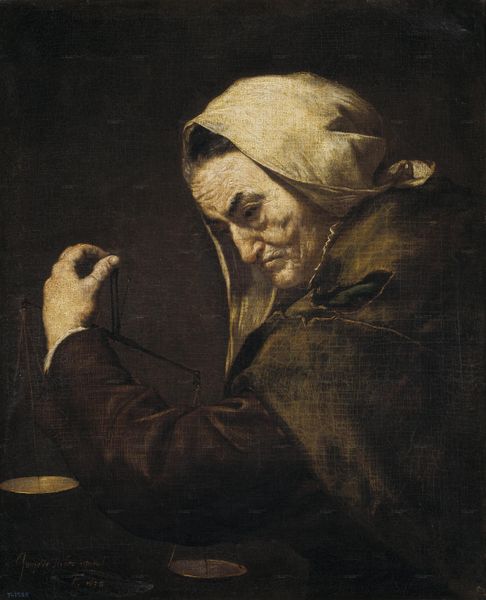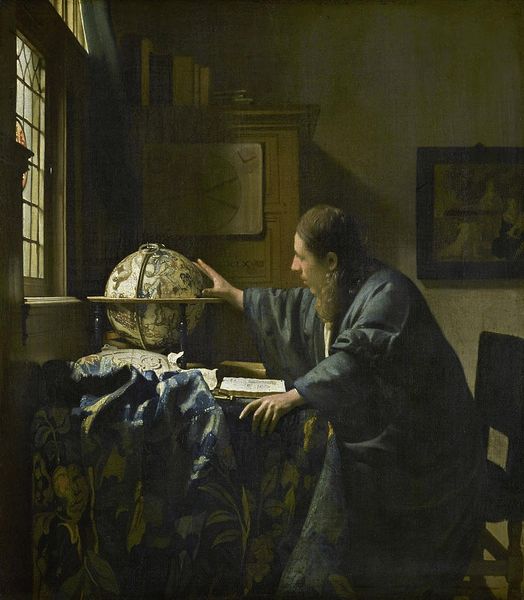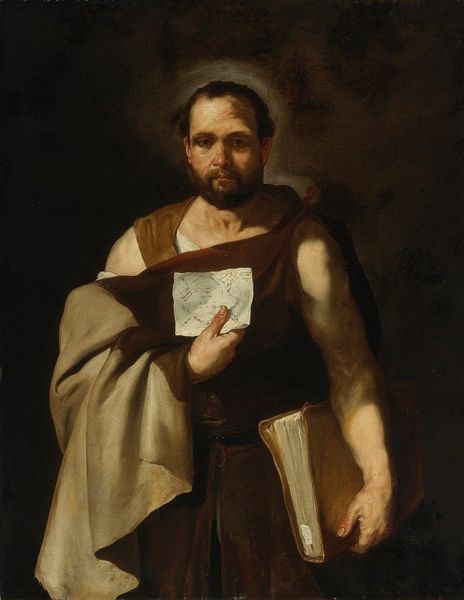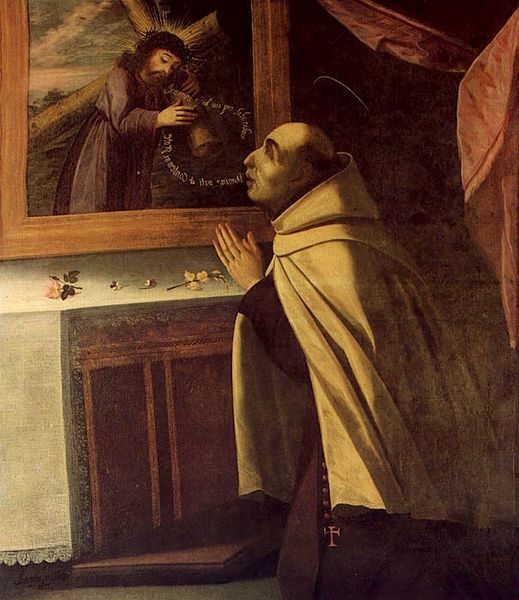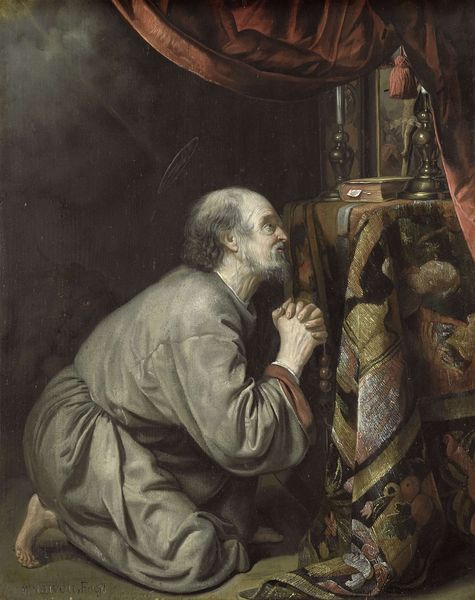
Saint Francis in Prayer 1610
0:00
0:00
caravaggio
Santa Maria della Concezione de Cappuccini, Rome, Italy, National Gallery of Ancient Art (GNAA), Rome, Italy
painting, oil-paint
#
portrait
#
allegory
#
baroque
#
painting
#
oil-paint
#
momento-mori
#
chiaroscuro
#
history-painting
#
italian-renaissance
#
portrait art
Dimensions: 130 x 98 cm
Copyright: Public domain
Curator: Here we see Caravaggio’s "Saint Francis in Prayer," painted around 1610. The artwork resides in the Santa Maria della Concezione de Cappuccini in Rome. Editor: My first impression is the overwhelming darkness. It’s like a stage, lit dramatically, isolating Saint Francis. The stark contrast is both powerful and unsettling. Curator: The strategic deployment of chiaroscuro defines Caravaggio’s style and is definitely present here. But more than mere aesthetic choice, this highlights a prevailing theme in the Counter-Reformation era. Editor: You mean? Curator: Yes. It signifies the individual's intimate encounter with divinity. The dramatic illumination casts focus on Francis's pensive demeanor. And his contemplation of mortality is heightened by the presence of the skull. Editor: Absolutely. Notice how the composition guides the viewer’s gaze. The light glides across the smoothness of the skull, emphasizing its formal qualities, then rises towards Saint Francis's downcast eyes, directing attention towards his spiritual reflection. Curator: His humility is really highlighted; his robe is threadbare. His saintliness isn't conveyed through opulence, but in this very lack of material wealth, set against the reforms championed by figures like Charles Borromeo, advocating simplicity and inner devotion in the face of extravagant papal displays. Editor: Indeed. You also have to admit the simple, yet brutal construction of the cross is striking. Its texture contrasts heavily with the skin of the skull. It sits like another shadow. Curator: The painting, originally adorning a private chapel, speaks volumes. Caravaggio captures Saint Francis in a way that mirrored the period's desire to forge a more personal connection to faith. The skull becomes a memento mori, underscoring the need to lead a righteous life, reflecting how deeply embedded mortality was within Baroque consciousness. Editor: Seeing how Caravaggio has masterfully interwoven light, form, and symbol allows you to really feel the quiet intensity radiating from Saint Francis. Curator: It reflects not only Saint Francis' personal devotion, but the society's anxieties surrounding salvation. It truly emphasizes art’s role during the Counter-Reformation.
Comments
No comments
Be the first to comment and join the conversation on the ultimate creative platform.
